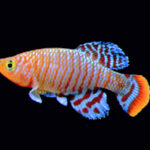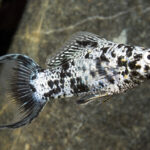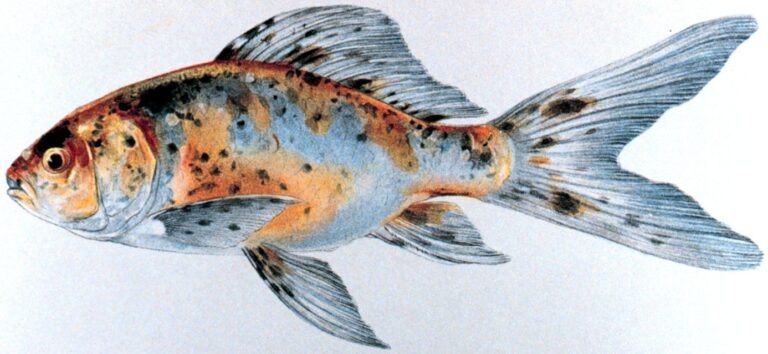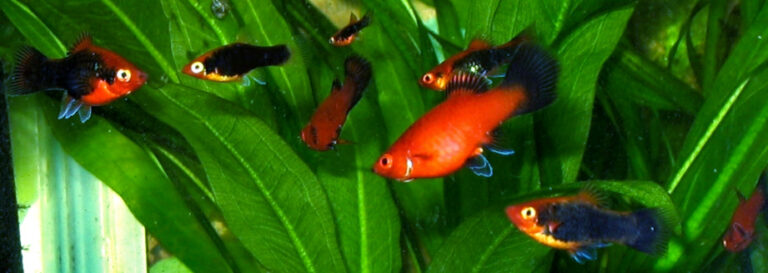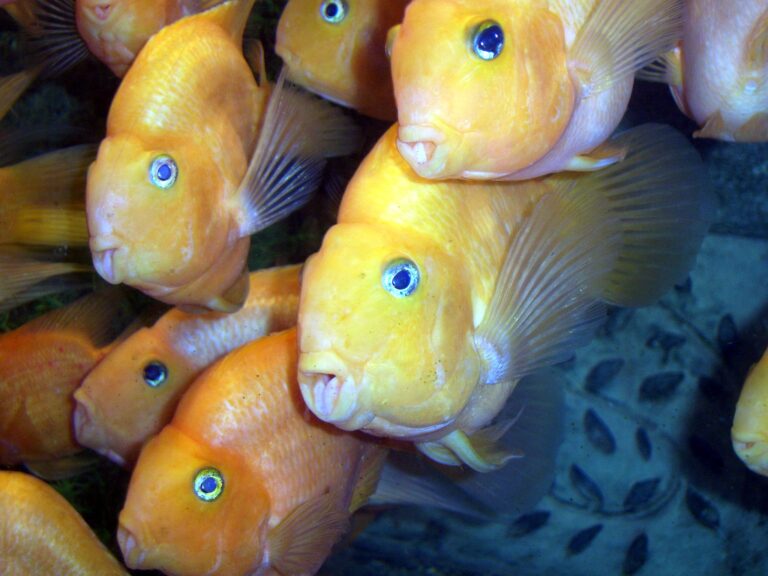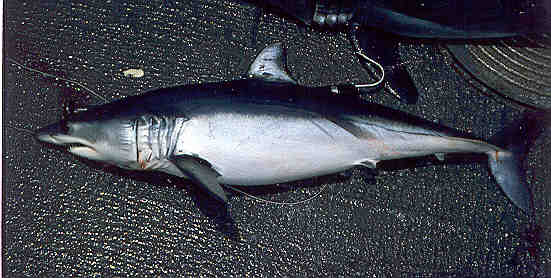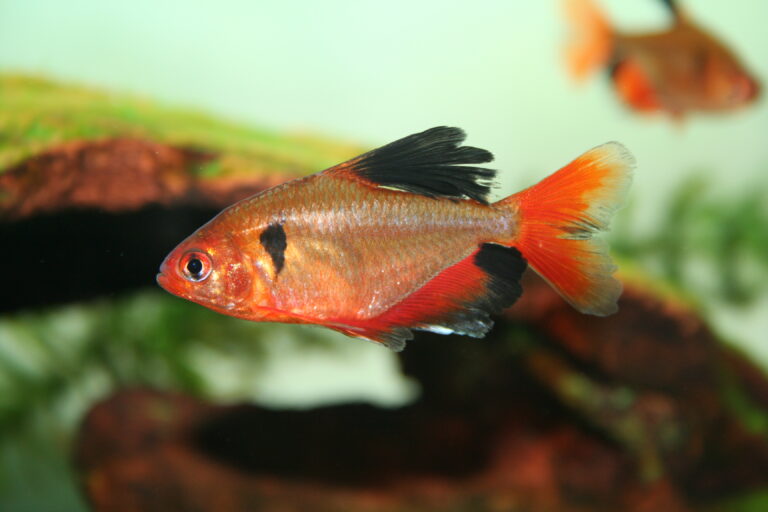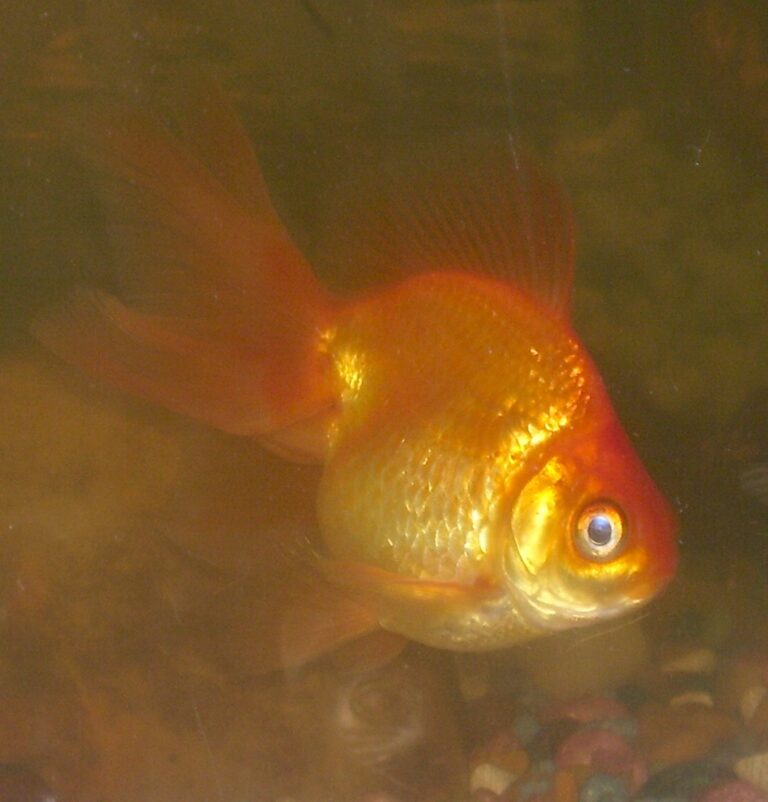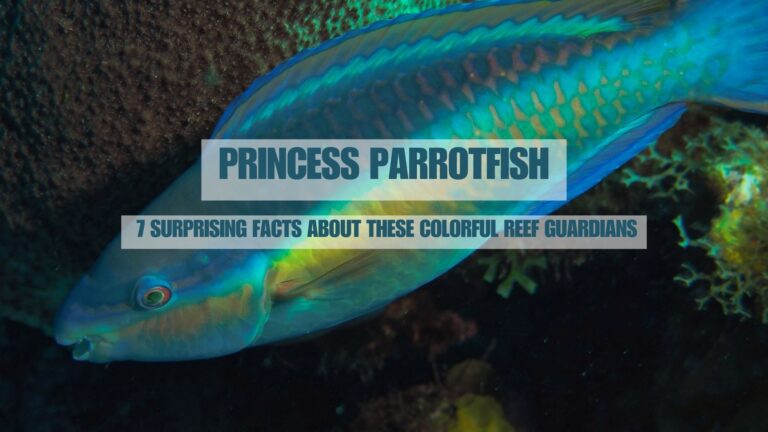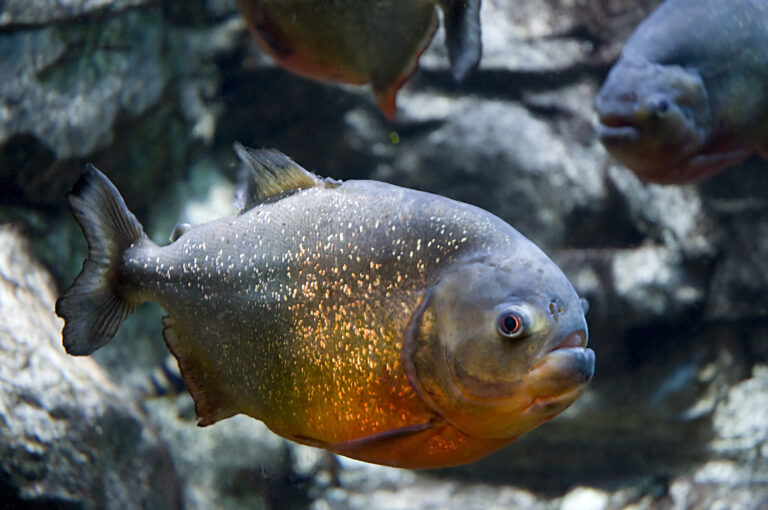Oscar Fish
By Ryan Maron | Last Modified: June 6, 2025

The Oscar Fish (*Astronotus ocellatus*) stands as one of South America’s most recognizable freshwater cichlids, earning widespread recognition both in its native Amazon Basin and aquarium trade worldwide. This robust predatory fish plays a crucial ecological role as a mid-level carnivore in neotropical river systems, while simultaneously representing one of the most popular large aquarium species globally. Oscar Fish demonstrate remarkable intelligence and territorial behavior that influences the structure of freshwater communities throughout their range. Their adaptability and predatory prowess have established them as keystone species in many South American waterways, where they regulate populations of smaller fish and invertebrates while serving as prey for larger predators.
| Feature | Details |
|---|---|
| Common Name | Oscar Fish |
| Scientific Name | Astronotus ocellatus |
| Family | Cichlidae |
| Typical Size | 30-35 cm (12-14 inches), 1.5-3.5 kg |
| Habitat | Slow-moving rivers and flooded forests |
| Diet | Opportunistic carnivore |
| Distribution | Amazon and Orinoco River basins |
| Conservation Status | Least Concern |
Taxonomy & Classification
Oscar Fish belong to the family Cichlidae, one of the largest vertebrate families containing over 1,300 described species. The genus *Astronotus* currently recognizes two valid species: *A. ocellatus* and *A. crassipinnis*, though taxonomic debates continue regarding potential subspecies and regional variants. Originally described by Louis Agassiz in 1831, the Oscar Fish has undergone several taxonomic revisions as molecular phylogenetic studies reveal relationships within the Cichlidae family.
Within the broader cichlid classification, Oscar Fish represent the subfamily Astronotinae, characterized by their large size, predatory behavior, and distinctive ocellated markings. Molecular analysis places *Astronotus* within the Heroini tribe, sharing ancestry with other large South American cichlids including *Cichla* species and *Crenicichla* genera. The species exhibits considerable morphological variation across its range, leading to ongoing discussions about potential cryptic species within the *A. ocellatus* complex.
Recent phylogenetic research suggests Oscar Fish diverged from their closest relatives approximately 15-20 million years ago during the Miocene epoch. This evolutionary timeline coincides with major geological changes in South America, including the uplift of the Andes Mountains and subsequent formation of modern river systems. Genetic studies indicate populations from different river basins show sufficient molecular divergence to warrant subspecies recognition, though formal descriptions remain pending.
Physical Description
The Oscar Fish presents a robust, laterally compressed body profile typical of large neotropical cichlids. Adult specimens typically reach lengths of 30-35 centimeters, with exceptional individuals occasionally exceeding 40 centimeters in optimal conditions. Body weight ranges from 1.5 to 3.5 kilograms, though wild specimens tend toward the lower end of this range compared to well-fed aquarium individuals.
Coloration varies significantly based on geographic origin, age, and environmental conditions. Wild-type Oscar Fish display a base coloration of dark olive to black with irregular orange, red, or yellow markings distributed across the body and fins. The species’ most distinctive feature remains the prominent ocellus or “eye spot” located near the caudal peduncle, typically surrounded by an orange or red ring. This marking serves both as a predator deterrent and territorial display mechanism.
The dorsal fin extends along most of the back, containing 12-13 spines and 19-20 soft rays. Anal fin structure includes 3 spines and 17-18 soft rays, while the rounded caudal fin provides powerful propulsion during burst swimming. Pectoral fins are notably large and fan-shaped, enabling precise maneuvering among submerged vegetation and fallen timber. The mouth is moderately large with thick lips and pharyngeal teeth adapted for processing various prey items.
Sexual dimorphism in Oscar Fish becomes apparent only during breeding periods, when mature individuals develop more pronounced coloration and behavioral differences. Males typically exhibit slightly pointed dorsal and anal fins, while females display fuller body profiles when carrying eggs. Juvenile specimens show more muted coloration with prominent banding patterns that fade as fish mature.
Habitat & Distribution
Oscar Fish inhabit the vast river systems of the Amazon and Orinoco basins, ranging from Peru and Colombia eastward to French Guiana and southward into northern Brazil and Bolivia. Their distribution encompasses over 7 million square kilometers of South American watersheds, making them one of the most widely distributed large cichlids in the neotropics. Primary habitats include slow-moving rivers, oxbow lakes, flooded forests (várzea), and seasonal wetlands.
Water parameters in natural Oscar Fish habitats typically range from slightly acidic to neutral pH levels between 6.0-7.2, with temperatures fluctuating between 24-28°C throughout the year. Conductivity remains relatively low, usually below 150 microsiemens, reflecting the soft water conditions characteristic of Amazonian systems. Seasonal flooding dramatically expands available habitat, allowing Oscar Fish to exploit temporary feeding grounds in inundated forest floors.
Preferred microhabitats include areas with complex structure such as fallen trees, submerged root systems, and overhanging vegetation. These features provide hunting opportunities, shelter from larger predators, and suitable spawning sites. Water depth preferences vary seasonally, with fish moving into shallow flooded areas during high water periods and retreating to deeper river channels during dry seasons.
Introduced populations now exist in several locations outside their native range, including southern Florida, where established breeding populations have persisted for over four decades. These introductions typically result from aquarium releases and have raised concerns about impacts on native fish communities. Water temperature appears to be the primary limiting factor preventing Oscar Fish establishment in temperate regions.
Diet & Feeding Behavior
Oscar Fish function as opportunistic carnivores with a diverse dietary spectrum that shifts based on size, season, and prey availability. Juvenile specimens primarily consume small invertebrates including chironomid larvae, copepods, and aquatic worms, gradually transitioning to larger prey items as they mature. Adult Oscar Fish demonstrate remarkable dietary flexibility, consuming fish, crustaceans, insects, and occasionally plant matter.
Prey fish constitute the primary component of adult Oscar Fish diets, with species selection influenced by local abundance and size constraints. Common prey species include characins, small catfish, and juvenile cichlids that inhabit similar habitats. Hunting strategies vary from ambush predation near structural cover to active pursuit in open water. The species exhibits particular efficiency at exploiting seasonal concentrations of prey during breeding migrations or flood events.
Invertebrate consumption remains important throughout the Oscar Fish life cycle, with adults regularly feeding on large aquatic insects, crayfish, and terrestrial arthropods that fall into the water. During flood seasons, diet composition expands to include terrestrial insects, spiders, and even small vertebrates trapped by rising waters. This dietary opportunism contributes significantly to their ecological success across diverse habitats.
Feeding behavior demonstrates notable intelligence and adaptability. Oscar Fish have been observed using suction feeding to extract prey from crevices and employing cooperative hunting strategies when pursuing schooling fish. Their powerful pharyngeal teeth enable processing of hard-shelled prey items, while protrusible jaws facilitate capture of elusive prey in complex environments.
Behavior & Adaptations
Oscar Fish exhibit complex behavioral repertoires that reflect their intelligence and adaptability within neotropical ecosystems. Territorial behavior dominates adult interactions, with established individuals defending feeding and breeding territories through aggressive displays, chasing, and physical confrontation. Territory size varies based on habitat complexity and resource availability, typically ranging from 50-200 square meters in optimal conditions.
Social dynamics reveal sophisticated recognition abilities, with Oscar Fish demonstrating individual recognition of neighbors and maintaining relatively stable territorial boundaries over extended periods. Dominance hierarchies form in areas with multiple individuals, influenced by size, age, and prior experience. Subordinate fish often adopt satellite strategies, exploiting temporary feeding opportunities while avoiding direct confrontation with dominant individuals.
Communication involves multiple sensory modalities including visual displays, acoustic signals, and chemical cues. Color changes serve as primary visual communication mechanisms, with rapid darkening indicating aggression or stress and lighter coloration associated with submission or courtship. Low-frequency sounds produced during aggressive encounters can be detected by nearby conspecifics and likely play important roles in territory establishment.
Cognitive abilities exceed those of most fish species, with Oscar Fish demonstrating problem-solving skills, spatial memory, and behavioral flexibility similar to other intelligent freshwater species. Learning capabilities include recognition of feeding schedules, maze navigation, and response modification based on environmental changes. These cognitive adaptations contribute significantly to their success as apex predators in complex aquatic environments.
Activity patterns follow diel rhythms with peak feeding occurring during dawn and dusk periods. Daytime hours are typically spent in territorial patrol or resting near structural cover, while nighttime activity increases during warm seasons. Seasonal movements occur in response to water level fluctuations, with fish tracking optimal habitat conditions throughout annual flood cycles.
Reproduction & Life Cycle
Oscar Fish reproductive biology follows typical cichlid patterns with monogamous pair bonding and extensive parental care. Sexual maturity occurs at approximately 12-18 months of age when fish reach lengths of 15-20 centimeters. Breeding seasons coincide with rising water levels during regional rainy seasons, typically spanning 4-6 months depending on geographic location.
Courtship behavior involves elaborate ritualized displays including circling, lateral displays, and synchronized swimming between potential mates. Pair formation represents a critical process, as successful reproduction requires compatible partners capable of coordinating parental duties. Once established, pairs often maintain bonds across multiple breeding cycles, though partner switching occasionally occurs following reproductive failures.
Spawning site selection focuses on flat, clean surfaces within defended territories. Preferred locations include submerged logs, large rocks, or excavated depressions in sandy substrates. Pre-spawning preparation involves intensive cleaning of selected surfaces, with both parents participating in site maintenance. Females deposit between 1,000-3,000 adhesive eggs in organized rows, immediately followed by male fertilization.
Parental care intensity exceeds that of most freshwater fish species. Both parents guard the spawning site continuously, fanning eggs to ensure adequate oxygenation and removing fungal infections or damaged eggs. Hatching occurs after 3-4 days at typical water temperatures, producing larvae that remain attached to the substrate for an additional 4-5 days while absorbing yolk sacs.
Free-swimming fry receive protection and guidance from both parents for 6-8 weeks following emergence. Parents lead fry schools to optimal feeding areas while maintaining vigilant protection against predators. Family groups gradually disperse as juveniles develop independence, though some offspring may remain in parental territories for several months in optimal conditions.
Predators & Threats
Adult Oscar Fish face predation pressure primarily from large piscivorous species including giant catfish, caimans, and river dolphins within their native range. Juvenile Oscar Fish experience significantly higher predation rates, with threats including larger cichlids, characins, catfish, and various aquatic reptiles and birds. Predator avoidance strategies rely heavily on structural cover utilization and rapid escape responses.
The distinctive caudal ocellus serves as an important anti-predator adaptation, potentially confusing attackers about body orientation and directing strikes away from vital head regions. Cryptic coloration provides camouflage among fallen leaves and woody debris, while behavioral modifications including reduced activity during high-risk periods help minimize predation exposure.
Human activities represent the most significant threats to Oscar Fish populations throughout their range. Habitat destruction through deforestation, dam construction, and water pollution affects spawning areas and nursery habitats critical for population recruitment. Mining operations introduce heavy metals and sediments that degrade water quality and reduce prey availability.
Overfishing pressure varies regionally but has intensified in areas with growing human populations and limited alternative protein sources. Oscar Fish represent important subsistence fishery targets in many rural communities, though sustainable harvest levels remain poorly documented. Commercial collection for the aquarium trade has historically impacted some populations, though captive breeding now supplies most international demand.
Climate change poses emerging threats through altered precipitation patterns and increased frequency of extreme weather events. Drought conditions reduce available habitat and concentrate fish in smaller water bodies, increasing competition and disease transmission. Conversely, severe flooding can disrupt breeding cycles and disperse populations beyond optimal habitat zones.
Conservation Status
The International Union for Conservation of Nature (IUCN) currently classifies Oscar Fish as Least Concern, reflecting their wide distribution, stable populations, and adaptability to environmental variation. However, this broad classification may mask regional population declines and local extirpations in areas experiencing intensive human development or environmental degradation.
Population assessments remain incomplete across much of the species’ range due to the vast geographic area involved and limited scientific infrastructure in many regions. Available data suggest stable or increasing populations in protected areas and regions with minimal human impact, while localized declines occur near major urban centers and areas of intensive resource extraction.
Regional conservation efforts focus primarily on habitat protection through establishment of protected areas and sustainable fisheries management. The Amazon Cooperation Treaty Organization coordinates multinational conservation initiatives that benefit Oscar Fish and associated aquatic communities. However, enforcement capabilities vary significantly among participating countries.
Captive breeding programs have achieved remarkable success, virtually eliminating pressure on wild populations from aquarium trade demands. Hundreds of thousands of Oscar Fish are produced annually in commercial breeding facilities worldwide, demonstrating the species’ adaptability to artificial environments and reducing incentives for wild collection.
Research priorities include comprehensive population surveys, habitat requirement assessments, and climate change vulnerability analyses. Long-term monitoring programs in key watersheds would provide essential data for adaptive management strategies. Additionally, genetic studies of regional populations could identify distinct evolutionary units requiring specific conservation attention.
Human Interaction
Oscar Fish hold significant cultural and economic importance throughout their native range, serving as both subsistence protein sources and valuable aquarium species in international trade. Indigenous communities have harvested Oscar Fish for centuries, developing traditional fishing methods and ecological knowledge that inform contemporary management approaches. Local names vary regionally, with “pavón” and “tucunaré” among the most common designations.
The international aquarium trade has elevated Oscar Fish to iconic status among freshwater aquarium enthusiasts worldwide. Their intelligence, interactive behavior, and striking appearance make them highly sought after despite requiring large tank systems and specialized care. Annual trade volumes exceed 500,000 individuals globally, though captive breeding now supplies virtually all commercial demand.
Recreational fishing for Oscar Fish has developed into specialized angling opportunities in both native and introduced ranges. Fishing techniques adapted from bass fishing methods prove effective for targeting these intelligent predators. Florida’s established populations support guided fishing operations that contribute millions of dollars annually to local economies.
Research applications utilize Oscar Fish as model organisms for studies of cichlid evolution, behavioral ecology, and neurological function. Their complex behaviors and learning capabilities make them valuable subjects for comparative cognition research. Additionally, their tolerance of varied environmental conditions facilitates laboratory studies that would be difficult with more sensitive species.
Educational programs in zoos and aquariums worldwide feature Oscar Fish as ambassadors for Amazonian conservation. Their charismatic nature and interactive behaviors effectively engage public audiences in discussions about freshwater biodiversity and habitat protection. These programs often emphasize the connection between aquarium keeping and wild conservation efforts.
Interesting Facts
Oscar Fish demonstrate remarkable problem-solving abilities that rival those of much higher vertebrates. Research has documented their capacity for spatial learning, with individuals successfully navigating complex mazes and remembering optimal routes for weeks after initial training. Some specimens have learned to recognize and respond to specific human caretakers, displaying behaviors that suggest individual recognition capabilities.
The species exhibits unique feeding innovations rarely observed in other fish. Wild Oscar Fish have been documented using tools, including manipulating sticks and debris to dislodge prey from crevices. Additionally, some individuals have developed cooperative hunting strategies, working together to herd schools of prey fish into areas where capture becomes more efficient.
Color variation in Oscar Fish extends far beyond natural patterns, with selective breeding producing dozens of ornamental varieties. Albino, leucistic, and heavily pigmented strains display colors ranging from pure white to deep red, often bearing little resemblance to their wild ancestors. The “tiger Oscar” variety, featuring bold black stripes on an orange base, represents one of the most popular aquarium forms.
Longevity records for Oscar Fish exceed 20 years in optimal captive conditions, though wild specimens rarely achieve such ages due to predation and environmental pressures. Growth rates vary dramatically based on food availability and water temperature, with some captive individuals reaching full size within 18 months while others require several years to mature.
The species plays important ecological roles beyond their direct predatory impacts. Oscar Fish serve as hosts for numerous parasites and symbionts, contributing to aquatic ecosystem complexity. Their nest-building activities create spawning sites subsequently utilized by other fish species, while their territorial behaviors influence spatial distribution patterns of smaller community members.
Frequently Asked Questions
How large do Oscar Fish grow in the wild versus captivity?
Wild Oscar Fish typically reach 25-30 centimeters in length and weigh 1-2 kilograms, while captive specimens often grow larger due to consistent food availability and optimal conditions. Aquarium-raised Oscar Fish frequently exceed 35 centimeters and can weigh over 3 kilograms, though this enhanced growth may reduce lifespan compared to wild counterparts.
Can Oscar Fish survive in temperate climates?
Oscar Fish require water temperatures above 20°C for extended survival and cannot tolerate freezing conditions. Established populations in southern Florida persist due to consistently warm subtropical temperatures, but attempts at introduction in temperate regions have failed due to winter mortality. Water temperature below 15°C typically proves fatal within days.
What makes Oscar Fish effective predators in their ecosystem?
Oscar Fish combine several predatory advantages including excellent vision, powerful suction feeding, intelligence for learning prey behavior patterns, and adaptability to various hunting strategies. Their ability to process hard-shelled prey with pharyngeal teeth while also capturing swift-swimming fish makes them highly versatile apex predators in neotropical freshwater systems.
How do Oscar Fish compare to other large freshwater game fish?
Unlike many temperate game fish that rely primarily on speed or size, Oscar Fish excel through intelligence and behavioral complexity. Their hunting strategies often surpass those seen in black bass species, incorporating tool use and cooperative behaviors rarely documented in other freshwater predators. This makes them particularly challenging and rewarding targets for experienced anglers.
Conclusion
Oscar Fish represent one of South America’s most successful and adaptable freshwater predators, demonstrating remarkable intelligence and ecological versatility across their vast native range. Their role as mid-level carnivores significantly influences freshwater community structure while their adaptability continues to fascinate researchers and aquarium enthusiasts worldwide. Continued habitat protection and sustainable management practices will ensure these remarkable cichlids persist as integral components of neotropical aquatic ecosystems for future generations to study and appreciate.
Share The Article:
More Fish Species:
-
Shubunkin Goldfish
The Shubunkin Goldfish (Carassius auratus) represents one of the most popular and visually striking varieties of goldfish kept in…
-
Southern Platyfish
The Southern Platyfish, scientifically known as *Xiphophorus maculatus*, represents one of the most significant freshwater fish species in both…
-
Blood Parrot Cichlid
The Blood Parrot Cichlid stands as one of the most distinctive and controversial specimens in contemporary aquarium culture. This…
-
Bigeye Thresher Shark
The Bigeye Thresher Shark represents one of the ocean’s most extraordinary predators, distinguished by its dramatically elongated tail fin…
-
Green Terror Cichlid
The Green Terror Cichlid stands as one of South America’s most formidable and visually striking freshwater fish species, commanding…
-
Green Swordtail
The Green Swordtail (Xiphophorus hellerii) represents one of the most recognizable and ecologically significant freshwater fish species in both…
Discover
-
7 Best Fly Fishing Rods for Beginners in 2025 (Tested by a Pro)
Ask any fly angler what their most important piece of gear is, and most will point to their rod….
-
Basic Fishing Techniques: Master the Fundamentals
There’s something magical about that first tug on your fishing line. I still remember mine, a scrappy bluegill on…
-
Shortfin Mako Shark
The Shortfin Mako Shark stands as one of the ocean’s most remarkable predators, combining exceptional speed with sophisticated hunting…
-
Caribbean Inshore Fishing: Bonefish and Permit Tactics
There’s something almost magical about stalking the shallow flats of the Caribbean. I still remember my first bonefish –…
-
Shore Fishing for Beginners: 5 Odd Techniques That Actually Work
I’ve spent more mornings than I can count standing on the shores of Michigan lakes watching boats drift by,…
-
7 Best Family-Friendly Fishing Destinations in the U.S. (Tested with Kids!)
I still remember the first time I took my son Tommy fishing. He was five, armed with a Spider-Man…
Discover
-
Serpae Tetra
The Serpae Tetra (Hyphessobrycon eques) stands as one of South America’s most recognizable freshwater aquarium species, distinguished by its…
-
Fantail Goldfish
The Fantail Goldfish represents one of the most recognizable and beloved fancy goldfish varieties in the aquarium trade worldwide….
-
Best Time to Go Fishing: Timing Tips for Bigger Catches
If there’s one question I get asked more than any other, it’s about timing. When should you cast that…
-
Princess Parrotfish: 7 Surprising Facts About These Colorful Reef Guardians
When it comes to the underwater world, few fish capture my imagination quite like the princess parrotfish. The first…
-
Sandbar Shark
The Sandbar Shark (Carcharhinus plumbeus) stands as one of the most recognizable and ecologically significant members of the requiem…
-
Red Belly Piranha
The Red Belly Piranha (*Pygocentrus nattereri*) stands as one of South America’s most misunderstood freshwater predators, wielding razor-sharp teeth…

